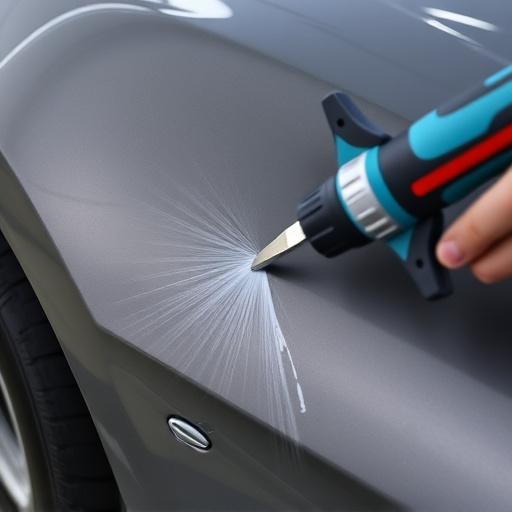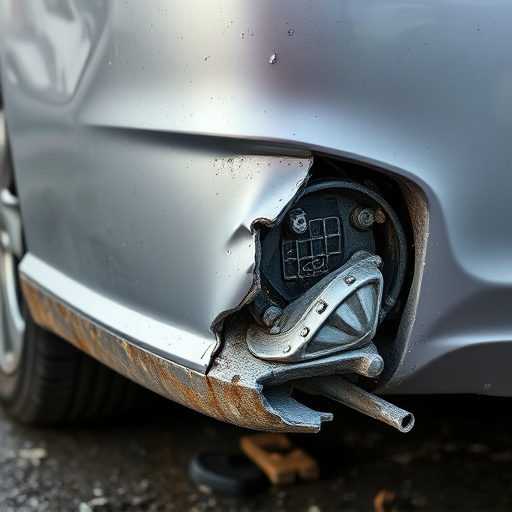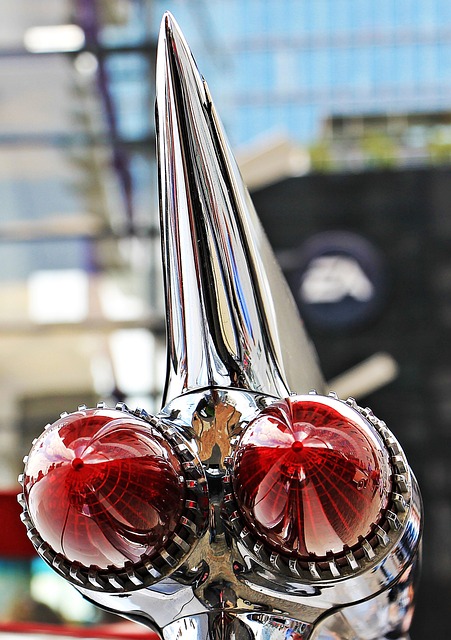Aluminum is a leading material in automotive, especially for hybrid and electric vehicles, due to its lightweight nature, superior thermal conductivity, corrosion resistance, and adaptability for innovative designs. It offers improved performance and handling compared to steel or carbon fiber components, enhancing fuel efficiency while promoting environmental sustainability. Aluminum's affordability, weight reduction capabilities, and versatility make it a cost-effective alternative to carbon fiber components in restoration and repair services, ensuring effective and lasting results. Its integration in HEVs reduces weight, improves fuel economy, and extends battery life, cementing its significance in sustainable transportation.
Aluminum body components are transforming the automotive industry, especially for hybrid and electric vehicles (EVs). This shift is driven by the need for lightweight, durable materials that enhance fuel efficiency and reduce emissions. While carbon fiber components have gained attention, aluminum offers significant advantages in cost, manufacturability, and recyclability. This article explores how aluminum plays a pivotal role in hybrid vehicles, delves into its benefits compared to carbon fiber, and highlights the integration of aluminum components for improved efficiency and sustainability.
- Exploring Aluminum's Role in Hybrid Vehicles
- Advantages of Aluminum Over Carbon Fiber
- Integrating Aluminum Components for Efficiency
Exploring Aluminum's Role in Hybrid Vehicles

Aluminum has established itself as a prominent material in the automotive industry, especially with the rise of hybrid and electric vehicles. Its lightweight properties are a key factor in the development of efficient powertrains, as it reduces overall vehicle weight, leading to improved fuel economy. In hybrid vehicles, aluminum’s role extends beyond structural components; it is often utilized in advanced systems like heat exchangers and battery casings due to its excellent thermal conductivity and corrosion resistance.
The material’s versatility allows for innovative designs, enabling engineers to create more compact and streamlined structures. As a lighter alternative to traditional steel or even carbon fiber components, aluminum offers significant advantages in terms of performance and handling. This is particularly crucial in the context of hybrid and electric vehicles, where every gram counts in optimizing range and overall vehicle dynamics. Thus, the integration of aluminum body components not only contributes to environmental sustainability but also enhances the overall driving experience.
Advantages of Aluminum Over Carbon Fiber

Aluminum has emerged as a compelling alternative to carbon fiber components in the automotive industry, especially for hybrid and electric vehicles. While carbon fiber is renowned for its exceptional strength-to-weight ratio, aluminum offers unique advantages that make it a preferred choice for modern vehicle manufacturing. One of the key benefits is its superior cost-effectiveness. Aluminum is more readily available and less expensive to produce than carbon fiber, making it an economical option for automakers looking to reduce costs without compromising quality.
Moreover, aluminum’s lightweight nature plays a crucial role in enhancing fuel efficiency and overall vehicle performance. Despite being lighter, aluminum can withstand extreme temperatures and corrosion better than many other materials, including carbon fiber. This makes it ideal for use in challenging automotive environments where components are exposed to varying weather conditions. In terms of classic car restoration or automotive repair services involving scratch repairs, aluminum’s versatility and durability ensure that repairs are both effective and long-lasting.
Integrating Aluminum Components for Efficiency

The integration of aluminum components in hybrid and electric vehicles (HEVs) is a strategic move toward enhancing efficiency and performance. Aluminum offers an excellent weight-to-strength ratio, which is crucial for reducing vehicle weight without compromising structural integrity. This is particularly significant in HEVs, where every kilogram saved contributes to improved fuel economy and extended battery life. By replacing heavier materials like steel, aluminum components can significantly lower a vehicle’s overall mass, resulting in better handling and reduced energy consumption.
Moreover, aluminum’s natural corrosion resistance makes it an ideal choice for automotive applications. Unlike carbon fiber components, which require complex manufacturing processes and specialized care, aluminum is readily available, cost-effective, and easier to work with. This facilitates faster production times and simplifies the car body restoration process, as well as making it a more accessible option for mercedes benz collision repair and general auto painting services. The versatility of aluminum ensures its continued importance in the evolving landscape of sustainable transportation.
Aluminum body components are poised to revolutionize the automotive industry, particularly for hybrid and electric vehicles. By leveraging aluminum’s inherent light weight and superior strength-to-weight ratio, manufacturers can achieve significant improvements in fuel efficiency and range. While carbon fiber components offer exceptional performance, aluminum’s lower cost and readily available supply chain make it a practical alternative, ensuring a more sustainable and accessible future for eco-friendly transportation.














